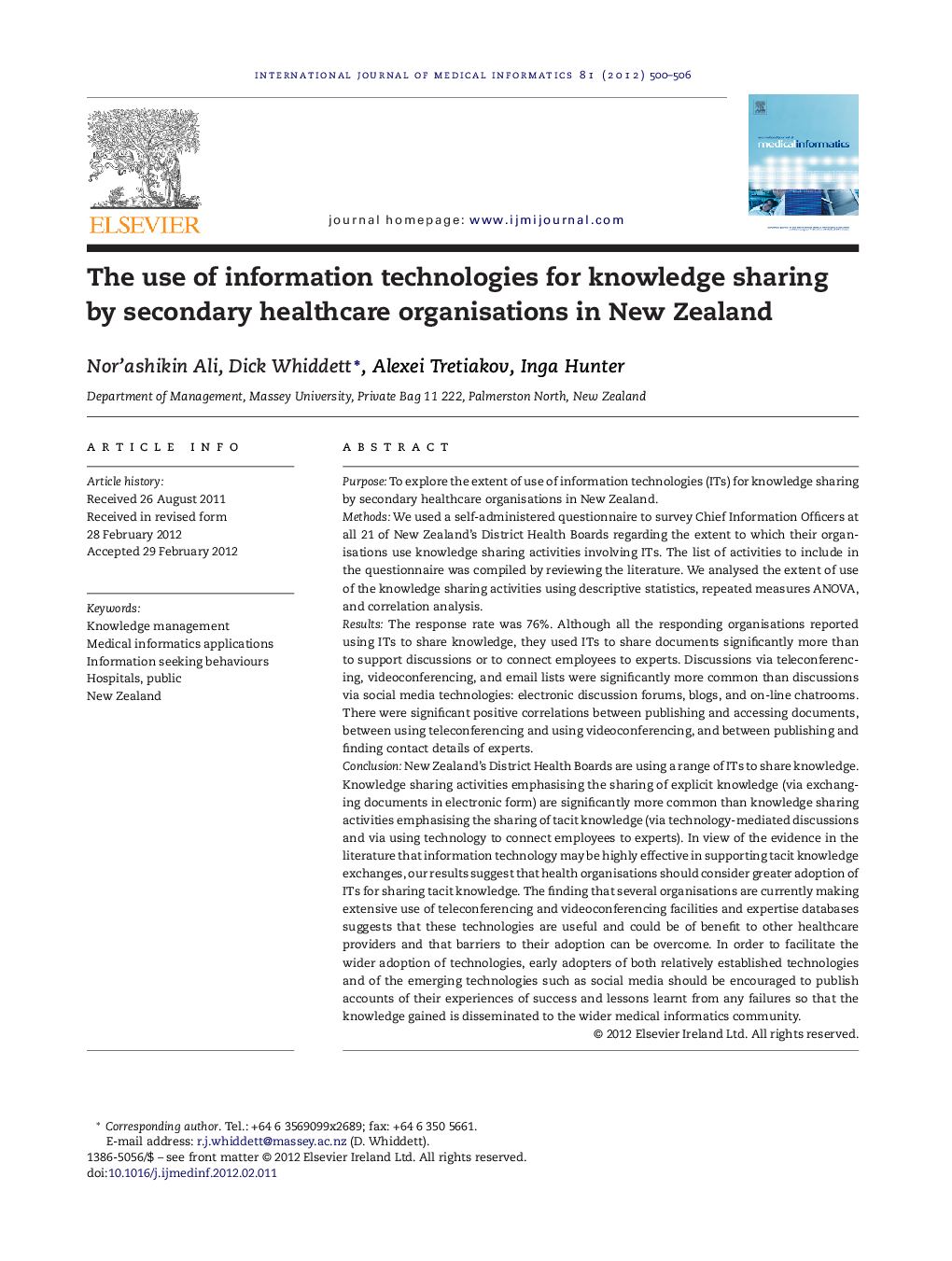| Article ID | Journal | Published Year | Pages | File Type |
|---|---|---|---|---|
| 516230 | International Journal of Medical Informatics | 2012 | 7 Pages |
PurposeTo explore the extent of use of information technologies (ITs) for knowledge sharing by secondary healthcare organisations in New Zealand.MethodsWe used a self-administered questionnaire to survey Chief Information Officers at all 21 of New Zealand's District Health Boards regarding the extent to which their organisations use knowledge sharing activities involving ITs. The list of activities to include in the questionnaire was compiled by reviewing the literature. We analysed the extent of use of the knowledge sharing activities using descriptive statistics, repeated measures ANOVA, and correlation analysis.ResultsThe response rate was 76%. Although all the responding organisations reported using ITs to share knowledge, they used ITs to share documents significantly more than to support discussions or to connect employees to experts. Discussions via teleconferencing, videoconferencing, and email lists were significantly more common than discussions via social media technologies: electronic discussion forums, blogs, and on-line chatrooms. There were significant positive correlations between publishing and accessing documents, between using teleconferencing and using videoconferencing, and between publishing and finding contact details of experts.ConclusionNew Zealand's District Health Boards are using a range of ITs to share knowledge. Knowledge sharing activities emphasising the sharing of explicit knowledge (via exchanging documents in electronic form) are significantly more common than knowledge sharing activities emphasising the sharing of tacit knowledge (via technology-mediated discussions and via using technology to connect employees to experts). In view of the evidence in the literature that information technology may be highly effective in supporting tacit knowledge exchanges, our results suggest that health organisations should consider greater adoption of ITs for sharing tacit knowledge. The finding that several organisations are currently making extensive use of teleconferencing and videoconferencing facilities and expertise databases suggests that these technologies are useful and could be of benefit to other healthcare providers and that barriers to their adoption can be overcome. In order to facilitate the wider adoption of technologies, early adopters of both relatively established technologies and of the emerging technologies such as social media should be encouraged to publish accounts of their experiences of success and lessons learnt from any failures so that the knowledge gained is disseminated to the wider medical informatics community.
► We surveyed use of IT for sharing knowledge in secondary care organisations in NZ. ► We found IT is used extensively to share explicit knowledge. ► Explicit knowledge is shared significantly more than tacit knowledge. ► Established technologies are used significantly more than social media technologies.
